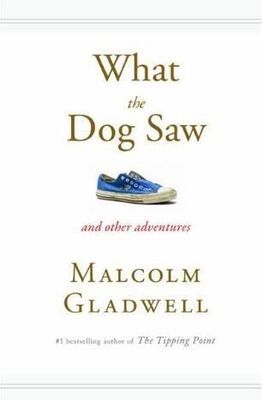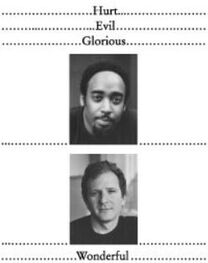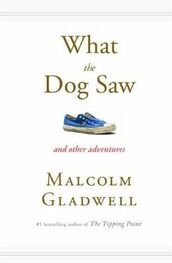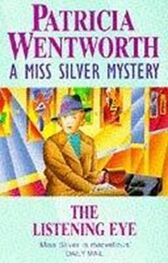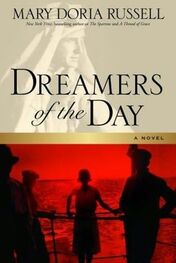In July of 2005, following a series of bombings in subways and on buses in London, the New York City Police Department announced that it would send officers into the subways to conduct random searches of passengers’ bags. On the face of it, doing random searches in the hunt for terrorists – as opposed to being guided by generalizations – seems like a silly idea. As a columnist in New York magazine wrote at the time, “Not just ‘most’ but nearly every jihadi who has attacked a Western European or American target is a young Arab or Pakistani man. In other words, you can predict with a fair degree of certainty what an Al Qaeda terrorist looks like. Just as we have always known what Mafiosi look like – even as we understand that only an infinitesimal fraction of Italian-Americans are members of the mob.”
But wait: do we really know what mafiosi look like? In The Godfather, where most of us get our knowledge of the Mafia, the male members of the Corleone family were played by Marlon Brando, who was of Irish and French ancestry, James Caan, who is Jewish, and two Italian-Americans, Al Pacino and John Cazale. To go by The Godfather, mafiosi look like white men of European descent, which, as generalizations go, isn’t terribly helpful. Figuring out what an Islamic terrorist looks like isn’t any easier. Muslims are not like the Amish: they don’t come dressed in identifiable costumes. And they don’t look like basketball players; they don’t come in predictable shapes and sizes. Islam is a religion that spans the globe.
“We have a policy against racial profiling,” Raymond Kelly, New York City ’s police commissioner, told me. “I put it in here in March of the first year I was here. It’s the wrong thing to do, and it’s also ineffective. If you look at the London bombings, you have three British citizens of Pakistani descent. You have Germaine Lindsay, who is Jamaican. You have the next crew, on July 21, who are East African. You have a Chechen woman in Moscow in early 2004 who blows herself up in the subway station. So whom do you profile? Look at New York City. Forty percent of New Yorkers are born outside the country. Look at the diversity here. Who am I supposed to profile?”
Kelly was pointing out what might be called profiling’s “category problem.” Generalizations involve matching a category of people to a behavior or trait – overweight middle-aged men to heart-attack risk, young men to bad driving. But, for that process to work, you have to be able both to define and to identify the category you are generalizing about. “You think that terrorists aren’t aware of how easy it is to be characterized by ethnicity?” Kelly went on. “Look at the 9/11 hijackers. They came here. They shaved. They went to topless bars. They wanted to blend in. They wanted to look like they were part of the American dream. These are not dumb people. Could a terrorist dress up as a Hasidic Jew and walk into the subway, and not be profiled? Yes. I think profiling is just nuts.”
Pit bull bans involve a category problem, too, because pit bulls, as it happens, aren’t a single breed. The name refers to dogs belonging to a number of related breeds, such as the American Staffordshire terrier, the Staffordshire bull terrier, and the American pit bull terrier – all of which share a square and muscular body, a short snout, and a sleek, short-haired coat. Thus the Ontario ban prohibits not only these three breeds but any “dog that has an appearance and physical characteristics that are substantially similar” to theirs; the term of art is “pit bull-type” dogs. But what does that mean? Is a cross between an American pit bull terrier and a golden retriever a pit bull-type dog or a golden retriever-type dog? If thinking about muscular terriers as pit bulls is a generalization, then thinking about dangerous dogs as anything substantially similar to a pit bull is a generalization about a generalization. “The way a lot of these laws are written, pit bulls are whatever they say they are,” Lora Brashears, a kennel manager in Pennsylvania, says. “And for most people it just means big, nasty, scary dog that bites.”
The goal of pit bull bans, obviously, isn’t to prohibit dogs that look like pit bulls. The pit bull appearance is a proxy for the pit bull temperament – for some trait that these dogs share. But “pit bull-ness” turns out to be elusive as well. The supposedly troublesome characteristics of the pit bull type – its gameness, its determination, its insensitivity to pain – are chiefly directed toward other dogs. Pit bulls were not bred to fight humans. On the contrary: a dog that went after spectators, or its handler, or the trainer, or any of the other people involved in making a dogfighting dog a good dogfighter was usually put down. (The rule in the pit bull world was “Man-eaters die.”)
A Georgia-based group called the American Temperament Test Society has put twenty-five thousand dogs through a ten-part standardized drill designed to assess a dog’s stability, shyness, aggressiveness, and friendliness in the company of people. A handler takes a dog on a six-foot lead and judges its reaction to stimuli such as gunshots, an umbrella opening, and a weirdly dressed stranger approaching in a threatening way. Eighty-four percent of the pit bulls that have been given the test have passed, which ranks pit bulls ahead of beagles, Airedales, bearded collies, and all but one variety of dachshund. “We have tested somewhere around a thousand pit bull-type dogs,” Carl Herkstroeter, the president of the ATTS , says. “I’ve tested half of them. And of the number I’ve tested I have disqualified one pit bull because of aggressive tendencies. They have done extremely well. They have a good temperament. They are very good with children.” It can even be argued that the same traits that make the pit bull so aggressive toward other dogs are what make it so nice to humans. “There are a lot of pit bulls these days who are licensed therapy dogs,” the writer Vicki Hearne points out. “Their stability and resoluteness make them excellent for work with people who might not like a more bouncy, flibbertigibbet sort of dog. When pit bulls set out to provide comfort, they are as resolute as they are when they fight, but what they are resolute about is being gentle. And, because they are fearless, they can be gentle with anybody.”
Then which are the pit bulls that get into trouble? “The ones that the legislation is geared toward have aggressive tendencies that are either bred in by the breeder, trained in by the trainer, or reinforced in by the owner,” Herkstroeter says. A mean pit bull is a dog that has been turned mean, by selective breeding, by being cross-bred with a bigger, human-aggressive breed like German shepherds or Rottweilers, or by being conditioned in such a way that it begins to express hostility to human beings. A pit bull is dangerous to people, then, not to the extent that it expresses its essential pit bull-ness but to the extent that it deviates from it. A pit-bull ban is a generalization about a generalization about a trait that is not, in fact, general. That’s a category problem.
One of the puzzling things about New York City is that, after the enormous and well-publicized reductions in crime in the mid-1990s, the crime rate has continued to fall. From 2004 to 2006, for instance, murder in New York declined by almost 10 percent, rape by 12 percent, and burglary by more than 18 percent. To pick another random year, in 2005 auto theft went down 11.8 percent. On a list of two hundred and forty cities in the United States with a population of a hundred thousand or more, New York City ranks two hundred-and-twenty-second in crime, down near the bottom with Fontana, California, and Port St. Lucie, Florida. In the 1990s, the crime decrease was attributed to big obvious changes in city life and government – the decline of the drug trade, the gentrification of Brooklyn, the successful implementation of broken windows policing. But all those big changes happened a decade ago. Why is crime still falling?
Читать дальше